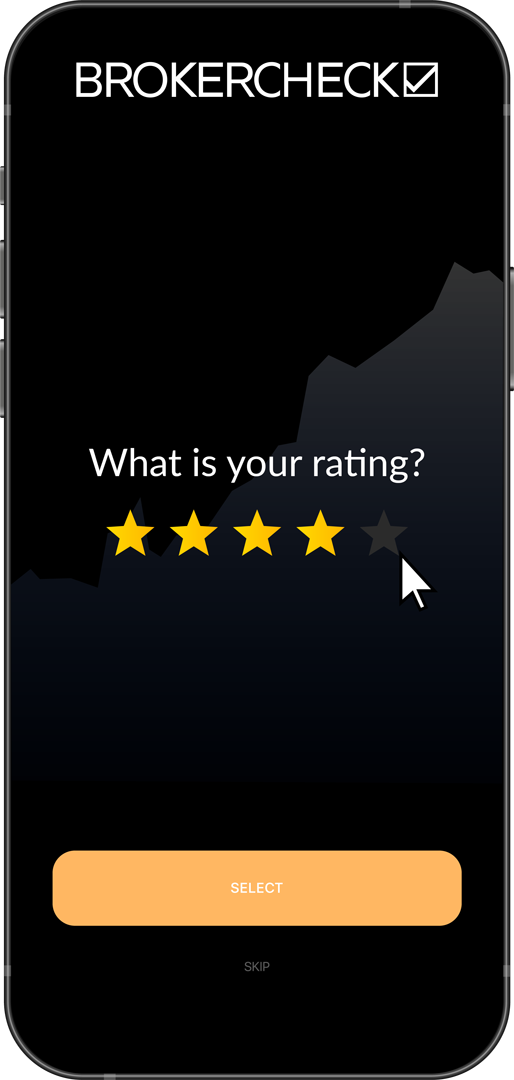1. Understanding the Detrended Price Oscillator
The Detrended Price Oscillator (DPO) is a unique tool that enables traders to identify cycles in the financial market, helping them to make more informed decisions. Unlike other oscillators that focus on the current price and its relation to a specific period, the DPO removes the trend from the price, hence its name. It does this by comparing the past price to a displaced moving average, effectively isolating short-term price cycles.
The DPO is calculated by subtracting the displaced moving average from the closing price. This displacement shifts the moving average back in time to centre it within the data, allowing the DPO to align with the peaks and troughs of the cycle. This is particularly useful for traders, as it provides a clearer picture of where the price is in its cycle, without the noise of the overall trend.
Using the DPO successfully requires a keen understanding of the market’s cyclical nature. Traders should look for peaks and troughs in the DPO as potential buy and sell signals. For instance, when the DPO reaches a peak, it suggests that the price is at a high point in its cycle and may be due for a downturn. Conversely, a trough in the DPO could indicate that the price is at a low point in its cycle, suggesting a potential buying opportunity.
However, like all trading tools, the DPO is not foolproof. It is best used in conjunction with other indicators and analysis methods. Furthermore, the DPO is a lagging indicator, meaning it is based on past prices. Therefore, while it can help identify potential trends, it may not always accurately predict future market movements.
Traders should also be aware that the DPO is not suitable for all markets. It works best in markets with clear, regular cycles. In markets with irregular cycles or significant volatility, the DPO’s effectiveness may be limited. However, in the right conditions, the DPO can be a powerful tool for traders, helping to identify potential opportunities and navigate the complex world of financial trading.
1.1. Definition of the Detrended Price Oscillator
The Detrended Price Oscillator (DPO) is a powerful tool that traders use to identify cycles within the market and forecast future price movements. Unlike traditional oscillators which typically measure momentum, the DPO focuses on the driving cycles behind these movements, effectively ‘detrending’ the price from its underlying trend.
How does it work? The DPO calculates the difference between a past price and a moving average over a given period, then shifts the result back by half this period. This process removes the trend from price, allowing the trader to focus on the cyclical movements.
Why is it important? By isolating these cycles, the DPO provides a clearer picture of the market’s rhythm, enabling traders to make more accurate predictions on price movements. This can be particularly useful in volatile markets where price trends can often be misleading.
What does it look like? On a chart, the DPO appears as a line oscillating around a zero line. Peaks and troughs in the DPO line correspond to the peaks and troughs in the price, providing key insights into the market’s cyclical nature.
How to interpret it? When the DPO line rises above zero, it indicates that the price is higher than its past average and suggests an upward cycle. Conversely, when the DPO line drops below zero, it indicates that the price is lower than its past average, suggesting a downward cycle.
By understanding and applying the Detrended Price Oscillator, traders can effectively ‘see through’ the market’s noise and focus on its underlying cycles. This can significantly enhance their trading strategy, helping them to anticipate market movements and trade more confidently.
1.2. How the Detrended Price Oscillator Works
The Detrended Price Oscillator (DPO) is a powerful tool that helps traders to identify potential buying and selling points by eliminating the long-term trends from price action. It accomplishes this by comparing the current price to a prior price, offset by half the chosen period. This ‘detrending’ process allows the DPO to focus solely on the short-term price fluctuations, which are typically caused by the market’s cyclical nature.
The DPO is calculated by subtracting the simple moving average from the price of a security. This value is then plotted against a time axis that is shifted back by half the length of the look-back period. The result is an oscillator that moves above and below zero, providing a visual representation of how the current price compares to an average price from a certain number of periods ago.
When the DPO is above zero, it indicates that the price is higher than the average from the offset period, suggesting a potential overbought condition. Conversely, when the DPO falls below zero, it implies that the price is lower than the average from the offset period, possibly indicating an oversold condition.
Traders often use DPO peaks and troughs to identify potential price reversals. A peak in the DPO can signal a price high and a potential selling point, while a trough can indicate a price low and a potential buying point. Additionally, traders may use the DPO to identify divergences between price and oscillator movements, which can also indicate potential price reversals.
It’s important to note that the DPO is a standalone indicator and does not predict future price movements. Instead, it provides a historical view of price oscillations, which traders can use to identify cyclical patterns and potential trading opportunities. As with any trading tool, the DPO should be used in conjunction with other technical analysis tools and methods to confirm signals and reduce the risk of false signals.
2. Successful Application of the Detrended Price Oscillator in Trading
In the ever-evolving world of trading, the Detrended Price Oscillator (DPO) stands out as a powerful tool that can significantly enhance your trading strategy. The DPO, a price oscillator that strips out trend in an effort to estimate the length of price cycles from peak to peak, or trough to trough, provides traders with a unique perspective on market behavior. Unlike other oscillators, which are aligned to the current price and are used primarily to identify overbought and oversold levels, the DPO is a displaced oscillator that is shifted back in time to remove the trend.
The strength of the DPO lies in its ability to help traders identify cycles more easily. By detrending the price data, it allows for the easier identification of cycles and potential overbought or oversold conditions. With the DPO, traders can better identify and anticipate turning points in the market, making it an essential tool for those looking to gain an edge.
To use the DPO effectively, it’s crucial to understand its calculation and interpretation. The DPO is calculated by subtracting the simple moving average from the price of an asset. A positive DPO indicates that the price is above the trend, suggesting potential overbought conditions, while a negative DPO suggests the price is below the trend, indicating potential oversold conditions.
Applying the DPO in trading requires careful consideration of its signals and the broader market context. It’s important to remember that the DPO is a lagging indicator and should be used in conjunction with other technical analysis tools for the best results. Traders can use the DPO to confirm trends identified by other indicators, or to spot divergences that could signal potential reversals.
In the end, the successful application of the DPO in trading comes down to understanding its limitations and strengths, and incorporating it effectively into a well-rounded trading strategy. With its unique ability to identify cycles and market extremes, the DPO can serve as a valuable tool for traders seeking to navigate the complexities of the market.
2.1. Detecting Price Cycles
Detecting price cycles is a critical aspect of successful trading. With the help of the Detrended Price Oscillator (DPO), traders can identify patterns in the market that may not be immediately visible. This powerful tool removes the trend from price, allowing traders to focus on the underlying cycles.
The DPO is calculated by subtracting the moving average from a price in the past. The “detrended” price allows you to compare the current price to historical averages, providing a clearer picture of the market’s cyclical nature. This can be particularly useful for traders looking to capitalize on short-term price fluctuations.
Understanding the rhythm of the market is a key to successful trading. The DPO can help traders identify when a market is overbought or oversold, providing valuable insights into potential trading opportunities. By comparing the current price to a historical average, traders can identify potential turning points in the market.
Timing is everything in trading, and the DPO can help traders identify the best times to enter or exit a trade. By identifying the peaks and troughs in a price cycle, traders can make more informed decisions about when to buy or sell. This can help traders maximize their profits and minimize their losses.
Identifying price cycles is not a guarantee of success, but it is a valuable tool in a trader’s arsenal. The DPO can provide insights into the market that other indicators may miss, helping traders stay one step ahead of the market. By understanding the cyclical nature of the market, traders can make more informed decisions and potentially increase their chances of success.
2.2. Enhancing Trading Strategies with the Detrended Price Oscillator
Detrended Price Oscillator (DPO) is a powerful tool that traders can utilize to enhance their trading strategies. This unique tool helps to eliminate long-term trends in prices, allowing traders to focus on the short-term patterns and cycles. The DPO is particularly useful in identifying peaks and troughs in the price of an asset, providing valuable insights into potential buying and selling opportunities.
The way the DPO works is quite fascinating. It essentially ‘detrends’ the price data by subtracting the moving average from the price. This gives a clear view of the price oscillations around the trend line, hence the name ‘Detrended Price Oscillator’. The resultant DPO chart typically oscillates above and below a zero line, with positive values indicating upward price pressure and negative values suggesting downward price pressure.
Understanding DPO signals is crucial for successful application. When the DPO line crosses above the zero line, it is generally a bullish signal, suggesting it may be a good time to buy. Conversely, when the DPO line crosses below the zero line, it is typically a bearish signal, indicating it may be a good time to sell or short the asset. However, like all technical indicators, the DPO should not be used in isolation. It is most effective when used in conjunction with other indicators and analysis methods.
One of the key benefits of the DPO is its ability to identify trading cycles. By removing the long-term trend, the DPO allows traders to see the underlying cycles more clearly. This can be incredibly useful in identifying the duration and amplitude of the cycles, which can in turn help to predict future price movements.
Moreover, the DPO can be a valuable tool in divergence trading. If the price is making higher highs while the DPO is making lower highs, it can be an indication of bearish divergence, suggesting that the upward trend may be weakening. Similarly, if the price is making lower lows while the DPO is making higher lows, it can signal bullish divergence, hinting at a potential upward reversal.
Incorporating the DPO into your trading strategy can provide a fresh perspective on price movements, helping you to make more informed trading decisions. However, it’s essential to remember that no single tool or indicator is infallible. Successful trading requires a comprehensive approach, incorporating a variety of tools, indicators, and analysis methods. The DPO is simply another tool in the trader’s toolbox, and when used effectively, it can significantly enhance your trading strategy.
3. Best Practices for Using the Detrended Price Oscillator
Understanding the Detrended Price Oscillator (DPO) is the first step to mastering its application. This tool, designed to eliminate the long-term trends in prices, is essential for identifying the short-term cycles in the market. By focusing on these cycles, traders can gain a clear picture of the market’s direction and make informed decisions.
Timing is everything when it comes to using the DPO. The oscillator moves in tandem with the actual prices but is shifted back in time to align with the cycle’s peaks and troughs. This shift is crucial in helping traders determine the length of the cycles and predict future price movements. It’s all about getting the timing right, and the DPO is your ally in this.
Setting the right period for the DPO is another crucial aspect. The period should correspond to the expected cycle length. For instance, if the expected cycle is 30 days, set the DPO period to 30. This will ensure that the DPO aligns perfectly with the cycle’s peaks and troughs, providing accurate signals.
Interpreting the DPO signals correctly is the final piece of the puzzle. When the DPO is above zero, it indicates that the price is above its past average and thus, bullish. Conversely, if the DPO is below zero, the price is below its past average, signaling bearish conditions.
Combining the DPO with other indicators, such as moving averages, can provide additional confirmation of signals. This combination can help traders avoid false signals and improve the accuracy of their predictions.
Remember, the DPO is a powerful tool, but like all tools, it’s only as good as the trader using it. Therefore, it’s crucial to practice and understand it thoroughly before incorporating it into your trading strategy.
3.1. Selecting the Appropriate Timeframe
In your trading journey, the selection of an appropriate timeframe is a crucial step that can significantly impact your success when using the Detrended Price Oscillator (DPO). It’s like choosing the right lens to view your market landscape, a decision that can either blur or bring your trading opportunities into sharp focus.
For short-term traders, such as day traders or swing traders, smaller timeframes such as the 15-minute, 1-hour, or 4-hour charts may be more suitable. These timeframes allow you to observe the minor market oscillations and capitalize on short-term price movements. Shorter timeframes can provide more trading signals, but they also come with an increased risk of false signals.
On the other hand, if you’re a long-term trader or investor, you might prefer to use the DPO on daily, weekly, or even monthly charts. These larger timeframes can help to filter out the ‘noise’ of minor price fluctuations, leaving you with a clearer view of the market’s overarching trends. While they may offer fewer trading signals, the signals they do provide are often more reliable and can result in more significant price movements.
Remember, there’s no ‘one-size-fits-all’ answer here. The best timeframe for you will depend on your trading style, risk tolerance, and the amount of time you can dedicate to trading. Experiment with different timeframes, and don’t be afraid to adjust your approach as you gain more experience and confidence in using the DPO.
3.2. Combining the Detrended Price Oscillator with Other Technical Indicators
The Detrended Price Oscillator (DPO) is a powerful tool in the arsenal of any savvy trader. However, its true strength shines when it’s combined with other technical indicators. Combining DPO with moving averages, for example, can offer an enhanced perspective on potential price trends. The moving average can provide a solid baseline for the trend, while the DPO helps identify the short-term fluctuations around this trend.
Another potent combination is DPO and Bollinger Bands. Bollinger Bands, which measure volatility and provide relative definition of high and low prices, can be used in tandem with DPO to confirm potential price reversals. When the price touches one of the Bollinger Bands and the DPO shows a peak or trough, this could signal a potential price reversal.
Relative Strength Index (RSI) is another technical indicator that pairs well with DPO. RSI measures the speed and change of price movements and is often used to identify overbought or oversold conditions. When RSI indicates an overbought or oversold condition and DPO shows a peak or trough, this could be a strong signal to buy or sell.
Remember, while combining DPO with other technical indicators can provide a more comprehensive view of the market, it’s crucial to understand the limitations and potential pitfalls of each tool. No single indicator or combination thereof can guarantee success in the market. It is always important to use these tools as part of a broader, well-rounded trading strategy.
3.3. Understanding the Limitations of the Detrended Price Oscillator
Just as every coin has two sides, so does the Detrended Price Oscillator (DPO). While it’s an incredibly useful tool in predicting price cycles and trends, it’s important to understand its limitations to use it successfully. The DPO, for instance, isn’t a standalone tool. It works best when used in conjunction with other indicators and methods of analysis, as it doesn’t provide signals for buying or selling on its own.
Another limitation is that the DPO doesn’t reflect the latest price movements. This is because it’s a centered oscillator, which means it’s plotted in relation to a midpoint rather than the current closing price. As a result, it’s more effective for identifying historical cycles than predicting future ones.
The DPO also doesn’t indicate the strength or weakness of a trend. It merely identifies the existence of a price cycle. If the price is trending strongly in one direction, the DPO may give false signals, leading to potential losses.
Moreover, the DPO doesn’t always accurately identify cycles. It’s crucial to remember that financial markets are influenced by a myriad of factors, and not all price movements are cyclical. If the price is moving due to news events or other non-cyclical factors, the DPO may not provide accurate information.
Understanding these limitations can help traders use the DPO more effectively. By combining it with other tools and applying careful analysis, it’s possible to minimize potential risks and make more informed trading decisions.










